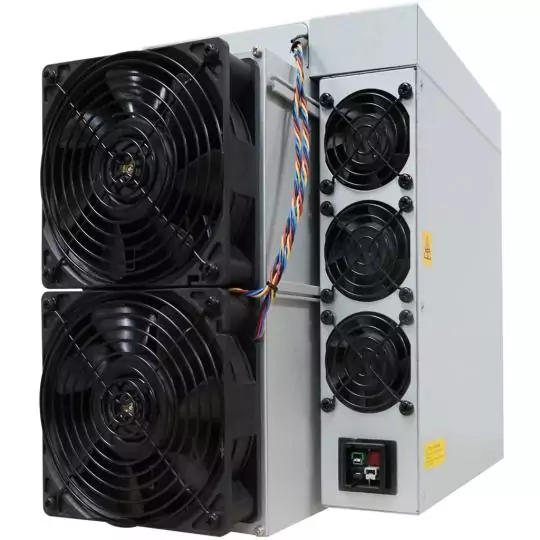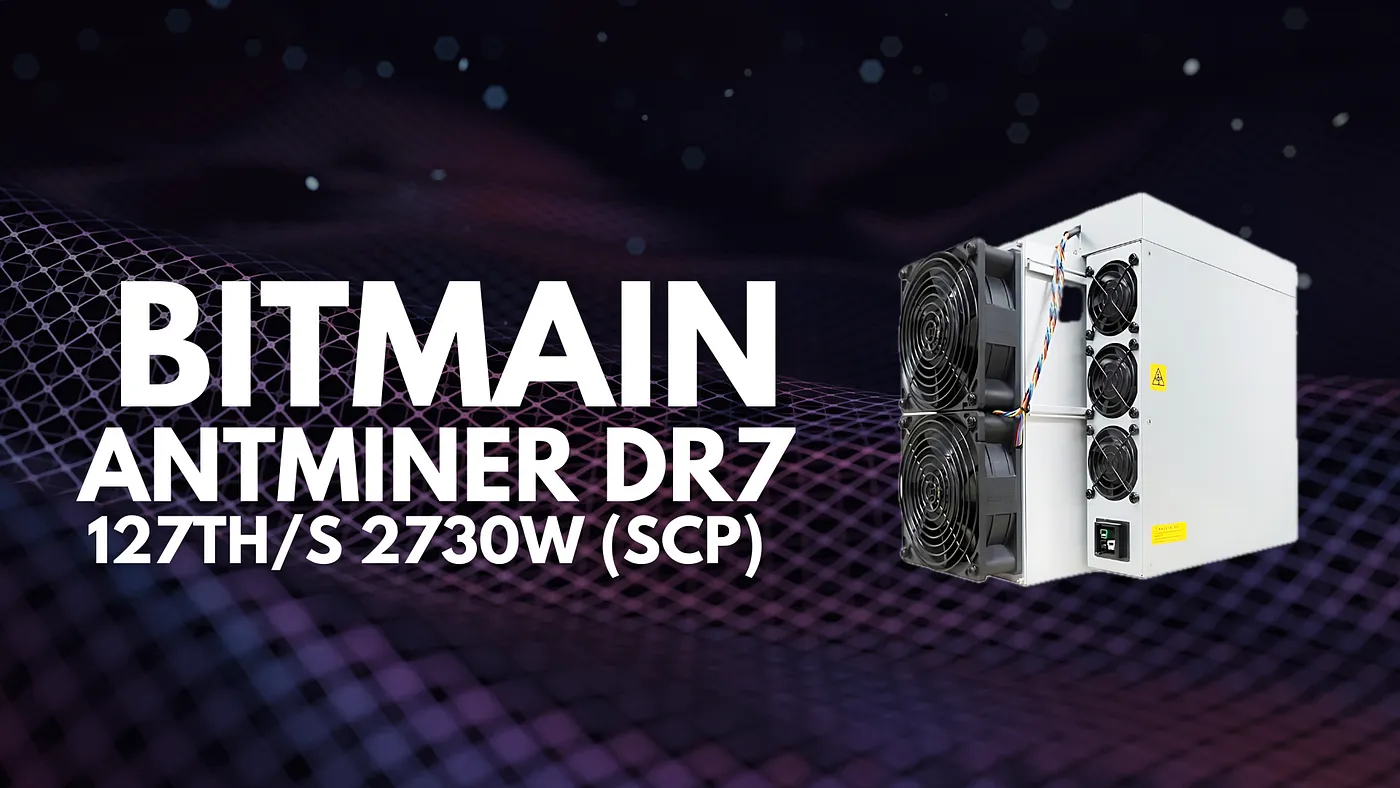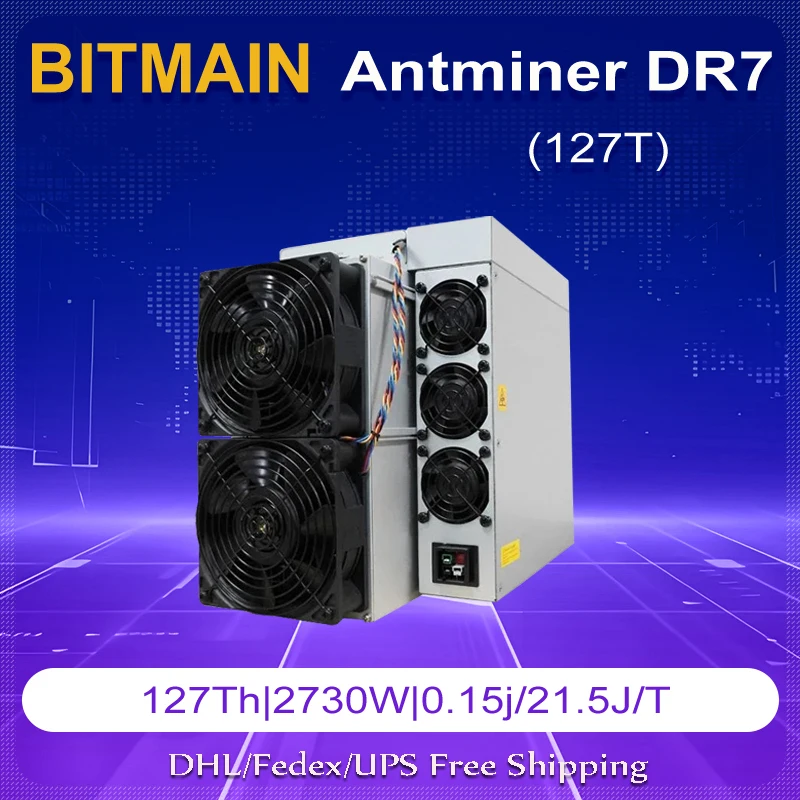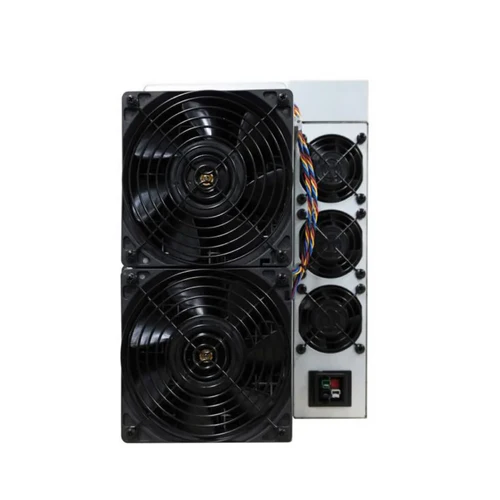Antminer DR7 SCP troubleshooting guide for common issues
Antminer DR7 SCP Troubleshooting Guide for Common Issues
Cryptocurrency mining has evolved into a highly competitive and technical field, requiring miners to operate at peak efficiency to maximize profitability. The Antminer DR7 SCP, Bitmain’s latest offering for Blake256R14 algorithm mining, is a powerhouse in this regard. With its impressive 127 TH/s hashrate and energy efficiency of 21.5 J/TH, the DR7 SCP is designed to deliver exceptional performance while minimizing operational costs. However, like any sophisticated piece of hardware, it can encounter issues that may hinder its efficiency. This guide provides practical troubleshooting tips for common problems faced by DR7 SCP operators, ensuring your mining operations remain smooth and productive.
Understanding the Antminer DR7 SCP
Before diving into troubleshooting, it’s essential to understand the key features and design of the DR7 SCP. Built with industrial-grade components, this miner is engineered for durability and adaptability. Its compact form factor (430 x 195 x 290mm) makes it suitable for both small-scale and large-scale mining setups, while its advanced quad-fan cooling system ensures optimal thermal management.
The DR7 SCP supports a wide range of environmental conditions, operating efficiently in humidity levels of 10-90% and storage temperatures as low as -20°C or as high as 70°C. Its Ethernet connectivity and 220-240V input voltage compatibility make it easy to integrate into existing mining infrastructure. Despite its robust design, miners may occasionally face issues that require troubleshooting.
Common Issues and Troubleshooting Steps
1. Miner Fails to Power On
Symptoms:

- No lights or indicators when plugged in.
- Fans do not spin up.
Troubleshooting Steps:
- Check Power Supply: Ensure the power supply unit (PSU) is functioning correctly and providing the required 220-240V. Test the PSU with another device if possible.
- Inspect Cables: Verify that all power cables are securely connected to both the miner and the PSU. Look for any visible damage to the cables.
- Power Outlet: Test the outlet with another device to ensure it’s delivering power.
- Reset the Miner: Disconnect the miner from the power source, wait 30 seconds, and reconnect it.
If these steps don’t resolve the issue, the problem may lie with the miner’s internal components, and you should contact Bitmain’s support team for assistance.
2. Low Hashrate or Performance Degradation
Symptoms:

- Hashrate consistently below 127 TH/s.
- Frequent fluctuations in performance.
Troubleshooting Steps:
- Check Network Connection: Ensure the miner is connected to a stable internet connection via Ethernet. A weak or unstable connection can reduce performance.
- Monitor Temperature: Overheating can cause the miner to throttle its performance. Verify that the cooling system is functioning correctly and that the ambient temperature is within the recommended range (10-35°C).
- Update Firmware: Check for firmware updates on Bitmain’s website. Outdated firmware can lead to suboptimal performance.
- Inspect Hardware: Open the miner (if comfortable doing so) and check for dust buildup or damaged components. Clean the internal components carefully using compressed air.
3. Overheating or Cooling System Issues
Symptoms:
- Fans running at maximum speed continuously.
- High internal temperatures reported in the miner’s dashboard.
Troubleshooting Steps:
- Clean the Fans and Vents: Dust accumulation can obstruct airflow and reduce cooling efficiency. Turn off the miner and clean the fans and vents using compressed air.
- Check Fan Functionality: Ensure all four fans are spinning properly. If a fan is malfunctioning, it may need to be replaced.
- Optimize Ventilation: Ensure the miner is placed in a well-ventilated area with adequate space around it for airflow. Avoid stacking miners too closely together.
- Adjust Environmental Conditions: If the ambient temperature is too high, consider installing additional cooling solutions such as industrial fans or air conditioning.
4. Network Connectivity Problems
Symptoms:
- Miner not detected on the network.
- Intermittent disconnections from the mining pool.
Troubleshooting Steps:
- Check Ethernet Cable: Replace the Ethernet cable with a new one to rule out cable issues.
- Verify IP Configuration: Ensure the miner has a valid IP address. You can configure this manually or use DHCP.
- Test Network Stability: Run a ping test to check for packet loss or latency issues.
- Router/Firewall Settings: Ensure the router or firewall is not blocking the miner’s connection.
5. Firmware Issues or Boot Failures
Symptoms:

- Miner stuck on the boot screen.
- Error messages related to firmware during startup.
Troubleshooting Steps:
- Reboot the Miner: Disconnect the power, wait 30 seconds, and reconnect it.
- Reinstall Firmware: Download the latest firmware from Bitmain’s website and follow the instructions for reinstalling it.
- Factory Reset: If the issue persists, perform a factory reset through the miner’s dashboard. Note that this will erase all custom settings.
Preventive Maintenance Tips
To minimize the likelihood of encountering these issues, adopt the following best practices:
- Regular Cleaning: Clean the miner’s fans and vents every 2-3 months to prevent dust buildup.
- Firmware Updates: Regularly check for and install firmware updates to ensure optimal performance and security.
- Environmental Monitoring: Maintain a stable ambient temperature and humidity level in your mining facility.
- Backup Configurations: Save your miner’s configuration settings so they can be easily restored if needed.
Leveraging the DR7 SCP’s Advantages
The Antminer DR7 SCP’s superior performance efficiency, advanced thermal management, and professional-grade reliability make it an excellent choice for serious miners. By understanding its features and addressing common issues proactively, you can maximize its potential and achieve a strong return on investment.
Bitmain’s 180-day warranty program also provides peace of mind, offering dedicated support for any hardware-related concerns. With proper care and maintenance, the DR7 SCP will remain a cornerstone of your mining operation for years to come.

In conclusion, the Antminer DR7 SCP is a testament to Bitmain’s commitment to innovation and sustainability in cryptocurrency mining. By following this troubleshooting guide, you can overcome common challenges and ensure your miner operates at its full potential, delivering consistent and profitable results.